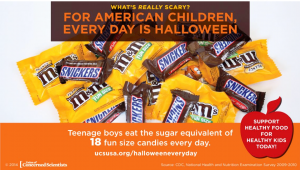WHO versus noncommunicable (chronic) disease: where’s the sugar target?
The World Health Organization (WHO) released two reports within the last week aimed at preventing noncommunicable diseases. Although the second is all about reducing sugar intake, the first report is about everything but.
1. The Global Status Report on Noncommunicable Diseases, 2014.*
The WHO press release points out that the report calls for:
more action to be taken to curb the epidemic, particularly in low- and middle-income countries, where deaths due to NCDs are overtaking those from infectious diseases. Almost three quarters of all NCD deaths (28 million), and 82% of the 16 million premature deaths, occur in low- and middle-income countries.
How? By working to achieve 9 targets:
- Target 1: A 25% relative reduction in risk of premature mortality from CVDs, cancer, diabetes, chronic respiratory diseases.
- Target 2: At least 10% relative reduction in the harmful use of alcohol, as appropriate, within the national context.
- Target 3: A 10% relative reduction in prevalence of insufficient physical activity.
- Target 4: A 30% relative reduction in mean population intake of salt/sodium.
- Target 5: A 30% relative reduction in prevalence of current tobacco use in persons aged 15+ years.
- Target 6: A 25% relative reduction in the prevalence of raised blood pressure or contain the prevalence of raised blood pressure, according to national circumstances.
- Target 7: Halt the rise in diabetes and obesity.
- Target 8: At least 50% of eligible people receive drug therapy and counselling (including glycaemic control) to prevent heart attacks and strokes.
- Target 9: An 80% availability of the affordable basic technologies and essential medicines, including generics, required to treat major NCDs in both public and private facilities.
Don’t dietary sugars have something to do with diabetes and obesity? How come no specific target? This is especially odd in light of the second report.
2. Guideline: Sugars Intake for Adults and Children [see updated, revised publication released March 2015]
The WHO makes three recommendations about intake of added (“free”) sugars:
- A reduced intake of free sugars throughout the lifecourse (strong recommendation).
- Reducing the intake of free sugars to less than 10% of total energy intake (strong recommendation).
- A further reduction of the intake of free sugars to below 5% of total energy intake (conditional recommendation)
Why no target for sugar reduction to 10% of energy in the first report?
The omission is glaring. Could politics be involved? It’s hard to think of any other explanation.
WHO needs to speak with one voice on NCD targets, guidelines, and recommendations.
* Along with the NCD target report, WHO also released:
- Noncommunicable diseases country profiles 2014
- Fact sheet on noncommunicable diseases
- More on noncommunicable diseases
**Thanks to Dr. Karen Sokal-Gutierrez for alerting me to the lack of a sugar target.


